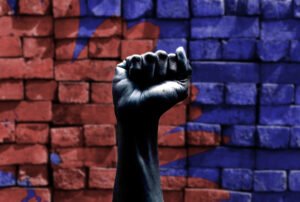July 28, 2016; GeekWire
While technology companies and labor unions haven’t always seen eye-to-eye, it may be time for them to come together. At the Digital Tools for Workers two-day conference in Seattle in mid-July, labor leaders, labor organizers, and entrepreneurs gathered to brainstorm possible technological solutions to help strengthen workers rights. According to conference organizers, the strategies of the past to organize workers to collectively bargain for better pay and benefits are not effective anymore.
The convention also focused on smartphone apps that could unite anyone, not just workers, for information sharing and promoting civic engagement. Several apps were aimed at closing the income gap, including one that would let hourly workers ensure they were being paid their full wage and compare salaries with workers in similar positions. Another would allow contract workers to set aside a portion of their income to use for paid sick or vacation time.
Sign up for our free newsletters
Subscribe to NPQ's newsletters to have our top stories delivered directly to your inbox.
By signing up, you agree to our privacy policy and terms of use, and to receive messages from NPQ and our partners.
Labor unions are already using available technology, such as Facebook and Snapchat, to share union news, sign petitions, and report workplace violations. The National Labor Relations Board launched their own app in 2013 to keep employers, employees, and unions up-to-date on rights and obligations under the National Labor Relations Act. This use of technology allows union organizers to reach more people in less time without having to rely on face-to-face interactions, particularly in businesses that don’t allow for it.
The week following the Digital Tools for Workers conference, the conversation about the intersection of tech and labor continued at the Democratic National Convention in Philadelphia. The tone there was slightly different, though. While convention speakers included leadership from the American Federation for Teachers (AFT), the AFL-CIO, and the Service Employees International Union (SEIU), the DNC largely made use of technology companies with which unions seem to be at odds. Uber, not unionized taxis, served as the shuttle service of choice at the convention. And one third of convention goers used Airbnb for accommodations rather than staying in unionized hotels.
Labor organizations have an opportunity to engage workers on a completely different scale than ever before. According to the Washington Post, the U.S. ranks at the bottom of the list for union membership among developed countries. Yet, neither presidential candidate seems to be talking about bringing back jobs that would be specifically protected by collective bargaining. It seems it will be up to labor leadership to think differently about how technology can help both organized labor and society at large break out of a decades-old mold of unionization.—Kelley Malcolm













